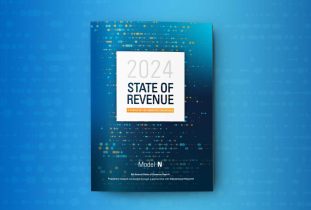When it comes to rebate and accrual management, manual processes have long been the norm for most medtech companies. However, manual processes present multiple opportunities for inaccuracies in reports, calculations, and data management, leading to numerous inefficiencies and delays. Here we explore the lifecycle for rebate and accrual management to see where and how these errors come into play.
Processing the rebate
Medtech companies need to determine which providers or facilities within a health system are eligible for rebates on particular products that were sold in a given time period. In the typical setup, each piece of information comes from a standalone enterprise system. This ultimately leads to operations teams taking the time to pull reports and information across multiple systems and data sources and cross reference them to verify who’s eligible for a rebate.
Performing the calculation
It’s no secret that nearly every medtech rebate is defined and calculated differently. Most companies create and maintain spreadsheets to track this information. This typically requires writing formulas manually and performing calculations within spreadsheet software. This is a common source of errors in the rebate management process. It also makes it difficult for companies to establish more systematic methods of writing rebates, as there’s no centralized repository for rebate information including data sources and calculation results.
Processing the payment
Once a payment has been calculated, operations teams must request that a payment be issued. That request usually flows from operations to enterprise resource planning (ERP) to accounts payable (AP) software. Enabling these requests often requires custom-coded software integrations – or a series
of email threads with document attachments. Both processes mean that employees must spend time completing low-level tasks.
Calculating accruals
When rebates are processed as individual transactions, and when the exact total of a rebate isn’t known until a check is cut, it’s impossible for accounting teams to know how much money to reserve. Accountants must instead base their calculations on historical data and make adjustments once payments have been issued. For large medtech companies, this could cause a reserve deficit of millions of dollars.
Compensating sales reps
The inability to calculate accruals on the fly makes it difficult to determine the difference between a gross price (before a rebate has been applied) and a net price (after the rebate has been applied). Consider two reps selling the same device. The rep who offers a gross price with a rebate will earn more than the rep who has to offer the lower up-front price without a rebate – even though the net price for both sales is the same.
Communicating with customers
When a customer’s rebates are processed one at a time, overall rebate numbers are difficult to determine at a quick glance, and sales reps are unable to communicate a total rebate amount. As a result, customers often don’t know the amount of their rebate check until it arrives in the mail. If it’s not what they were promised, that can lead to a complicated conversation with the sales team.
Preparing for audits
Rebate programs are subject to regulatory scrutiny. It’s also not uncommon for customers to request audits of their own rebates – especially if the amount of the rebate is significantly less than expected. When rebates are managed manually, rebate analysts must pore over spreadsheets and reports to track transactions and ensure that payments match the appropriate rebate definitions. This is a time-consuming and resource-intensive process.
The benefits of automation
There are numerous operational and financial benefits to automating rebate and accrual workflows: more accurate calculations, fewer customizations with rebate programs, better projection of customer rebates, and improved topline revenue due to more accurate payments and increased sales volume.
To learn how to get more out of rebate and accrual business processes through automation, including how Model N Rebate Management can help, download our white paper here.
















